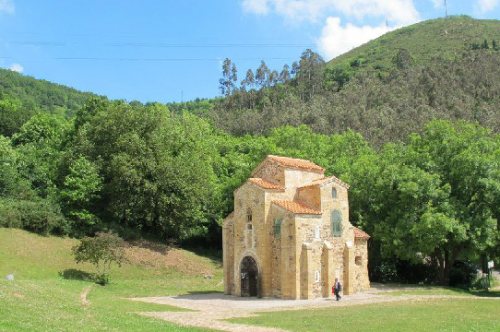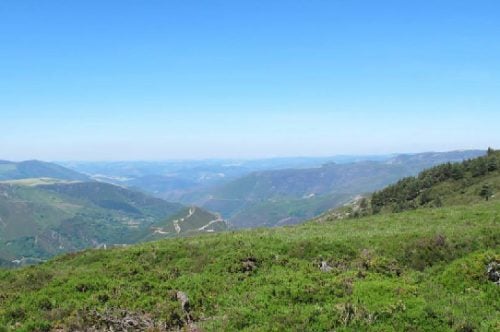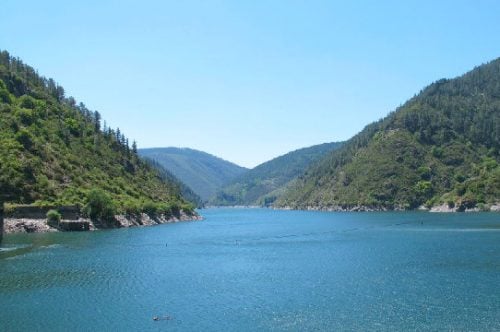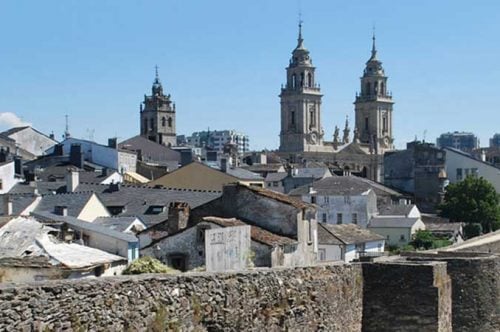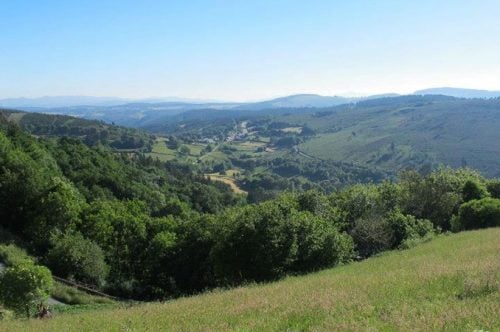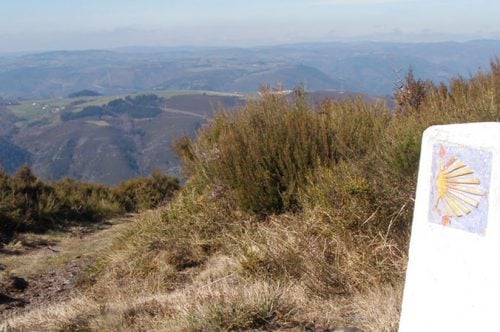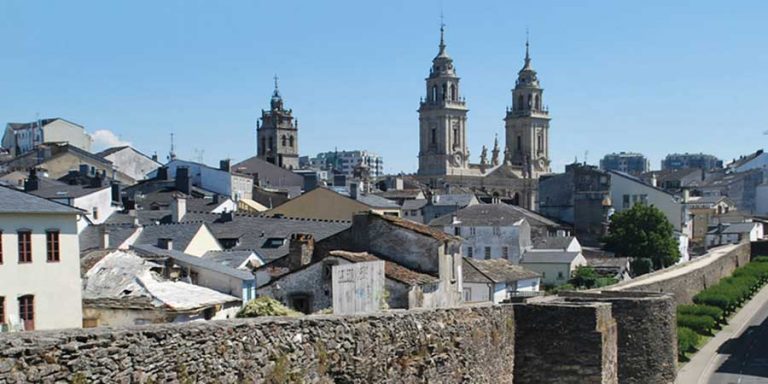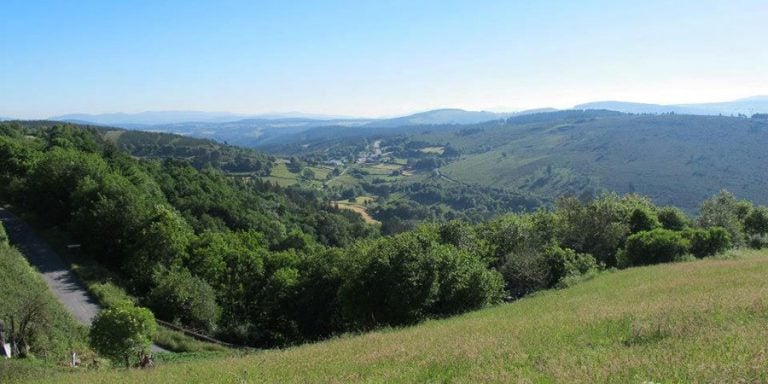The Camino Primitivo
The Camino Primitivo, or Original Way, is the oldest of all the Camino de Santiago routes. It was first walked in the 9th century by King Alfonso II of Asturias, who travelled from Oviedo to Santiago de Compostela to confirm that the remains discovered there were those of St James the Apostle. His journey marked the beginning of a pilgrimage tradition that would inspire millions over the centuries.
At that time, Oviedo was the capital of the Kingdom of Asturias, and King Alfonso’s devotion helped establish the Camino as a sacred path across northern Spain. Pilgrims from Asturias, Galicia, and beyond — including travellers who arrived by sea from northern Europe — followed in his footsteps, walking west through the mountains toward Santiago de Compostela.
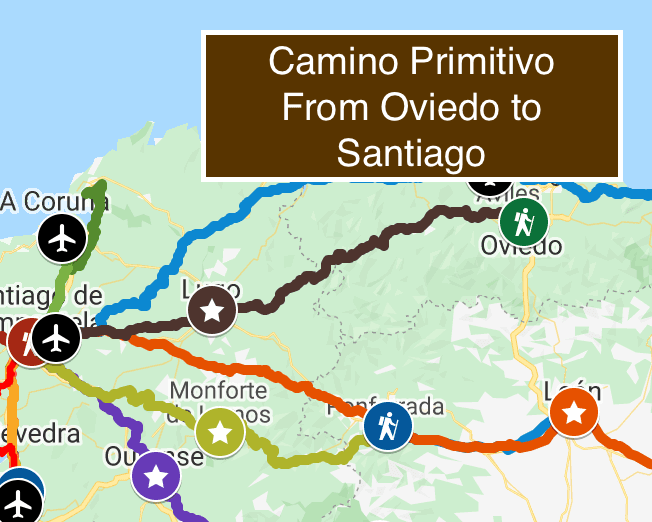
The Camino Primitivo crosses the Cantabrian Mountains, winding through lush forests, remote hamlets, and ancient towns steeped in legend. Notable stops include Oviedo’s Cathedral of San Salvador, home to the revered Sudarium of Oviedo (believed to be the cloth that covered Christ’s head), and Lugo, a UNESCO World Heritage city known for its fully preserved Roman walls.
Though less travelled than the Camino Francés, the Camino Primitivo offers one of the most authentic and rewarding pilgrim experiences. Its rugged landscapes, spiritual solitude, and rich history make it perfect for walkers seeking a quieter, more reflective Camino.
For those who prefer a shorter or gentler journey, it’s possible to start in Lugo and walk the final 100 km to Santiago, earning the Compostela certificate while experiencing the heart of this historic route.
Why Choose the Camino Primitivo?
- Historic first route – the original path to Santiago.
- Scenic challenge – mountain ridges, valleys, and forests.
- Spiritual heritage – Oviedo’s San Salvador Cathedral, Lugo’s Roman walls.
- Authentic feel – less than 5% of pilgrims choose this way.
- Culinary highlights – taste Asturias cider and Galicia’s famous pulpo in Melide.
This route is ideal for experienced walkers looking for a rewarding challenge off the beaten track.
Suggested Routes
Highlights of the Camino Primitivo
Here are a few Camino Primitivo highlights:
- Pay homage to San Salvador in Oviedo Cathedral.
- Take in the panoramic mountain views in Grandas de Salime.
- Experience the hospitality of tiny country villages.
- Walk the impressive Roman wall wrapped around Lugo’s old town.
- Sample Pulpo in Melide (octopus), where the Camino Primitivo joins the famous Camino Francés.
Suggested Routes
- Full Camino Primitivo – Oviedo to Santiago (311 km, 2 weeks).
- Last 100 km from Lugo – Lugo to Santiago (97 km, 1 week).
- Customise your itinerary with our Camino Planner.
Compostela Certificate
To earn your Compostela, you must:
- Walk at least the last 100 km of the Primitivo (start in Lugo).
- Cycle at least the last 200 km of the Primitivo (start in Oviedo).
👉 Learn more in our Compostela Certificate Guide.
Camino Ways Route Planner
For over 1000 years, pilgrims from all over the world have walked the Camino Ways across Europe in their quest for spirituality. Making the pilgrimage to Santiago de Compostela in Spain, they encountered a variety of people, cultures and beliefs, leading to friendship and new experiences. This continues today with the Camino de Santiago being the most well known and well-loved walk in the world. More than just a walk, the Camino de Santiago is an unforgettable and unique journey for the body, mind and soul.
When to Go on the Camino Primitivo
- Late spring to early autumn – best walking conditions.
- Winter – snow and storms in the Cantabrian Mountains, making the Oviedo–Lugo stretch very challenging.
- Lugo to Santiago – possible year-round, though Galicia is wetter in winter.
👉 See our Best Time to Walk the Camino guide.
The Terrain on the Camino Primitivo
- Mountainous & demanding – steep ascents/descents between Oviedo and Lugo.
- Rugged & rural – forest paths, quiet valleys, small villages.
- Easier Lugo section – gentler countryside walking, ideal for beginners.
👉 Prepare with our Camino Fitness Plan.
What To Bring On The Camino Primitivo?
Our Camino packing guide ebook is free to download. This will help you decide what to bring on your Camino.
Essentials:
- Waterproof gear & layered clothing (mountain weather changes fast).
- Sturdy boots with ankle support.
- Trekking poles recommended.
Camino Primitivo Route Description
The first stage of the Camino Primitivo, across the mountains, is one of the most challenging of all Camino routes, but the scenery is breathtaking.
It will take you approximately two weeks to walk the full Camino Primitivo from Oviedo, which is 311 km. We recommend taking at least one rest day after the first week (Lugo will be a good spot for a rest day). If you’d rather only walk from Lugo, you can complete the trail on foot in just one week.
The Camino Primitivo, along with the Camino del Norte, has been a UNESCO World Heritage Site since 2015.
Camino from Oviedo to Lugo
Oviedo is the starting point of the Camino Primitivo, but pilgrims from further afield in Northern Spain and Europe traditionally followed this route. The route crosses the Cantabrian Mountains, giving walkers outstanding views of the Picos de Europa, and passes quaint mountain villages in Asturias and Galicia.
Camino from Lugo to Santiago
Camino Primitivo continues from Lugo towards Santiago de Compostela through peaceful forests and farmland, joining the final stretch of the Camino Francés in the lively town of Melide, where you should try Galicia’s most classic dish: Pulpo a la Gallega. The city of Lugo is one of the highlights of this Camino route. Lugo’s old town is nested inside Spain’s only fully preserved Roman wall, an impressive UNESCO World Heritage site.
History of the Camino Primitivo
- 9th century – King Alfonso II makes the first pilgrimage to Santiago.
- Early popularity – pilgrims from Spain and northern Europe follow this route.
- San Salvador Cathedral in Oviedo – a revered stop, “Who goes to Santiago without visiting the Saviour, visits the servant but misses the Lord.”
- Hospitals & shelters – built high in the mountains to aid pilgrims in harsh conditions.
- UNESCO recognition – since 2015, the Camino Primitivo is part of the World Heritage listing.
👉 Explore more in our History of the Camino.
Camino Made Easy
With CaminoWays, your Camino Primitivo includes:
- Handpicked accommodation.
- Daily luggage transfers.
- 24/7 support, maps, and walking notes.
👉 Explore Guided Tours or Self-Guided Tours.
FAQs
What is the Camino Primitivo?
The Camino Primitivo is the oldest Camino de Santiago route, first walked by King Alfonso II in the 9th century. It runs from Oviedo to Santiago de Compostela.
How long is the Camino Primitivo?
The full Camino Primitivo is 311 km from Oviedo and takes about two weeks. If you start in Lugo, the last 100 km can be completed in one week, similar to the Camino Frances from Sarria.
Is the Camino Primitivo difficult?
Yes, it is one of the most challenging routes due to its mountainous terrain, especially between Oviedo and Lugo. For an easier experience, start in Lugo. Compare with the Camino Frances, which is less demanding.
Can I earn a Compostela walking the Camino Primitivo?
Yes. To receive your Compostela, you must walk at least the last 100 km (from Lugo) or cycle the final 200 km. See our guide on Compostela certificates.
When is the best time to walk the Camino Primitivo?
The best time is late spring to early autumn. Winters are snowy in the Cantabrian Mountains, making the Oviedo–Lugo section very challenging. For planning, read our best time to walk the Camino guide.
Closing Thought
The Camino Primitivo is the original Camino – a rugged, historic path through mountains and legends. For adventurous pilgrims seeking authenticity and challenge, it offers an unforgettable journey to Santiago.
👉 Ready to plan your Camino Primitivo? Try our Award-Winning Camino Planner.
